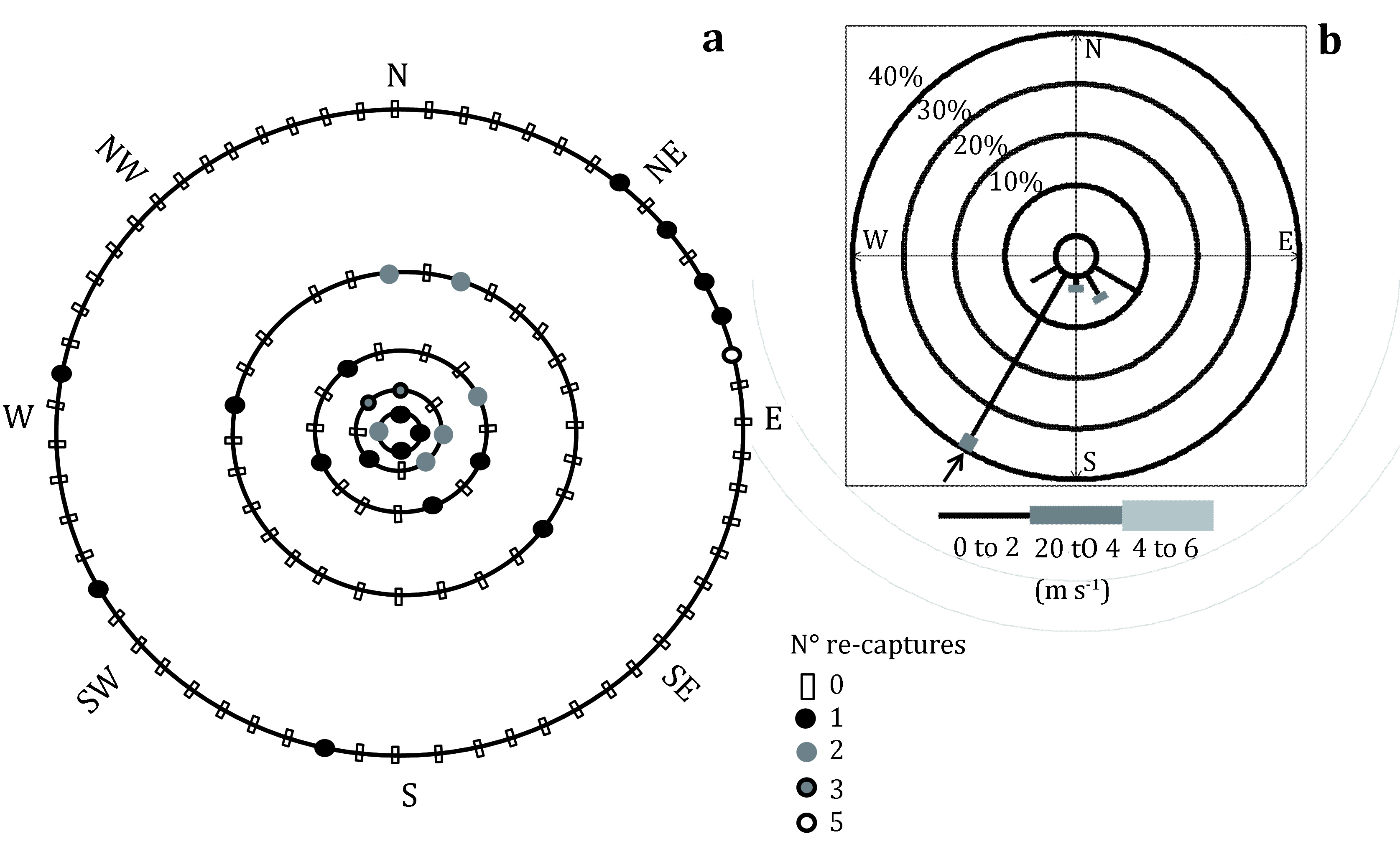Dispersal of the pea leaf miner Liriomyza huidobrensis (Blanchard, 1926) (Diptera: Agromyzidae): a field experiment
Palabras clave:
tamaño corporal, insecto herbívoro plaga, movimiento, vientoResumen
Movement of herbivore insects within agroecosystems can ultimately determine the level of damage to crops. It was evaluated the dispersal of Liriomyza huidobrensis (Blanchard, 1926) (Diptera: Agromyzidae) under field conditions. In addition, it was evaluated if body size was related to dispersal distance. Eight hundred individuals of L. huidobrensis were released in the central point of a series of concentric circles (6, 12, 24, 48, and 96 m in radius), where 117 yellow sticky traps were set to insect recapture. Circular Statistics were used to evaluate flight direction whereas hurdle models were applied to analyze dispersal probability in relation to distance. Five percent of the released individuals were recaptured, being 36 m the median distance of recapture. The distribution of recaptured insects was not random around the circles, but the preferential dispersal direction was not explained by wind direction. The incidence of recaptured L. huidobrensis of both sexes significantly decreased at increasing distances from the release point, but decayed faster for females. No effect was found of body size on the distance of recapture. The results suggest that L. huidobrensis dispersed mainly over short distances with males being capable of performing longer flights than females.
Descargas

Descargas
Publicado
Cómo citar
Número
Sección
Licencia
Aquellos autores/as que tengan publicaciones con esta revista, aceptan las Políticas Editoriales.










.jpg)




